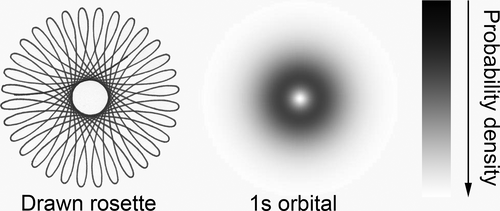Михаил Курушкин - ординарный доцентр SCAMT провел исследование на тему применимости спирогрофа для обучения химии, результаты работы опубликованы в научном журнале Journal of Chemical Education.
Статья посвящена исследованию применимости спирографа для первичного введения концепции плотности вероятности в седьмом классе. Выходное тестирование показало, что знаменитая британская игрушка позволяет одинаково эффективно объяснить сложную тему детям как научного, так и артистичного склада ума.
Результаты исследования показывают, что использование спирографа на ранних стадиях изучения химии позволяет заложить у детей основы представления о вероятностной природе обнаружения электрона в атоме. Авторы статьи заметили, что некоторые узоры, получаемые с помощью спирографа, напоминают 1s орбиталь.

Abstract:
A difficult topic to impart to students is the location of an electron within an atom. One possible way of introducing the concept of the electron probability density in an elementary classroom is by use of a Spirograph geometric ruler. Upon scrutinizing the generated patterns, it can be seen that they have areas that are notably dense and others that are almost bare. This probability density can be likened to that of the electron. The suggested activity was carried out with a group of 14-year-old students that had no prior knowledge of atomic structure. The gaps in the pattern and its color intensity gradient were commented on by the students. The students (N = 86) were given a post-test to evaluate their understanding. As the results show, 83% of the students’ grades were satisfactory. The present research suggests that the Spirograph activity is suitable for the primary introduction of the concept of probability density in an elementary classroom.
Keywords: Analogies/Transfer; Atomic Properties/Structure; Collaborative/Cooperative Learning; Elementary/Middle School Science; Hands-On Learning/Manipulatives; Inquiry-Based/Discovery Learning; Physical Chemistry; Student-Centered Learning
Read full: https://pubs.acs.org/doi/10.1021/acs.jchemed.8b00391